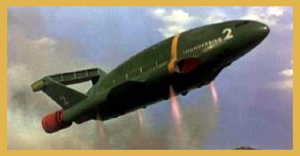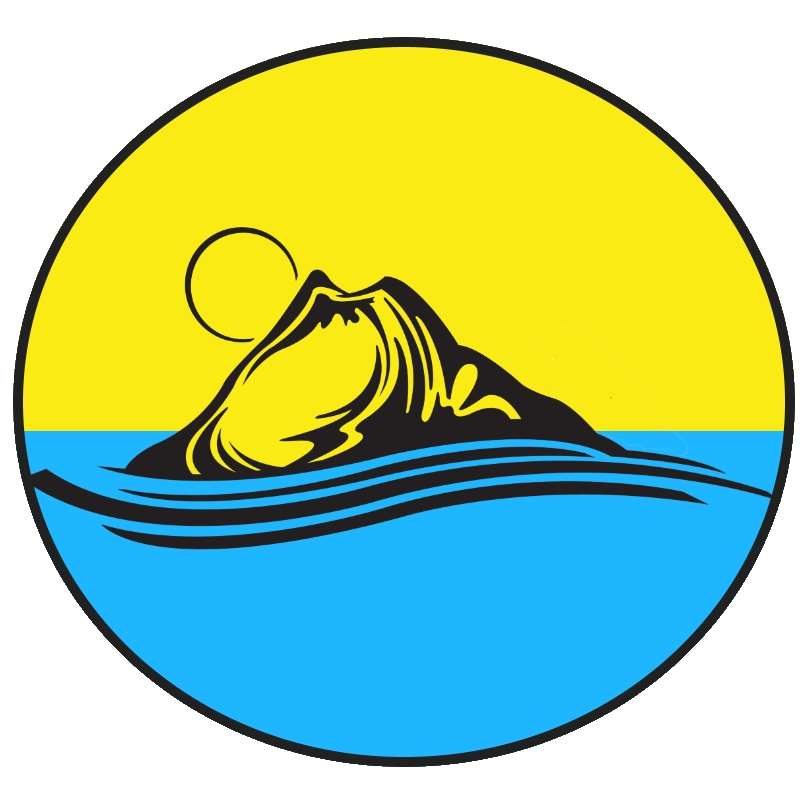Thunderbird Two

Here are the Canon Foundry facts about Thunderbird One, all taken from the International Rescue Thunderbirds Agents’ Technical Manual written by Sam Denham (2012):
Dimensions
Length: 250 feet (for the records, this is 110 feet shy of an American football field)
Width: 180 feet
Height: 60 feet
Weight: 406 tons (excluding payload)
Payload: up to 100 tons
Performance
Maximum Speed: 5,000 mph
Cruising Speed: 2,000 mph
Maximum Altitude: 100,000 feet
Range: unlimited
Power
Power Source: Atomic fusion reactor
Engines
- 2 variable-cycle gas turbine engines operating as turbo fans at low speed and supersonic combustion ramjets at high speed
- 12 variable-cycle turbo-ram cruise/trim jets in tailplane
- 4 vertical take-off fan jets in main body
- 4 vertical take-off chemical rockets in landing legs
Other Information
- Dubbed “the giant workhorse of International Rescue”
- Fuselage can be fitted with interchangeable pre-loaded pods
- Side spars are fitted with telescopic landing legs and thrusters for vertical landing and take-off
- A two-level nose cone section houses the craft’s control cabin and multi-purpose tool bay.
- Cahelium (super light and incredibly strong) form a bonded twin-boom support frame around which the aircraft body has been built.
- Upper level of split level nose cone has: control cabin, medical section, astrodome missile targeting unit, air-to-air rescue system.
- Lower level of split level nose cone has: central hatch through which a variety of devices can be lowered, including magnetic grabs, debris-clearance claws and a personnel escape capsule.
- From the villa on Tracy Island, the pilot slides down to the entry chute delivery point on the flight deck rear bulkhead, which deposits the pilot in front of the instrument panel, folding into the pilot chair.
- There are two additional passenger seats behind the pilot’s chair in the cockpit.
- There is an elevator that comes from the villa and slides down through the top of Two, depositing passengers against the back bulkhead behind the pilot’s seat. This is located between the pilot’s entry chute delivery and the access hatch.
- Behind the pilot’s seat and next to the elevator is an access hatch to the hover-jet holding bay, sorage lockers for rescue and medical supplies, crew accommodations and the rear access door leading to the pod inspection gallery.
- Uses MIDAS (Molecular Interspatial Displacement Anti-Detecction Shroud) to cloak it from military and civilian radar/satellite detection systems. This prevents it from being tracked in flight to and from Tracy Island.
- The two long bits on either side of Two, from the ramjet air intakes in the front to the red ramjets on the back are collectively known as nacelles.
- Rollers in the base of the pods enable Two to leave and return to its hangar.
- Pods: rear pod door is for ease of loading before and after missions. Only pods 1, 2, 3 and 6 are fitted with a rear door.
- There is a central access corridor which runs from the cockpit through the central access deck, through the bay where the air-to air equipment bay hatch is all the way back to the entry hatch to the pod overhead gallery. This corridor also provides access to the medical bay, the hover-jets (sometimes called hover bikes), the missile launcher bay, the missile firing turret, twin sleeping bunks, a shower unit, a toilet and another elevator in the far back of Two’s nose cone.
- The other elevator in the far back of Two’s nose cone is accompanied by an access ladder and leads to the lower storage bay and equipment deck of the nose cone.
- From Glo Thorogood: The sound of a Vulcan bomber taxiing is the noise used for Thunderbird Two flying. This comes from the Barry Gray sound tapes archive.
Information from the Thunderbirds Information Sheet:
Colour – Green with red markings
Length – 250 feet
Speed – 5,000 miles per hour
Pilot – Virgil Tracy

